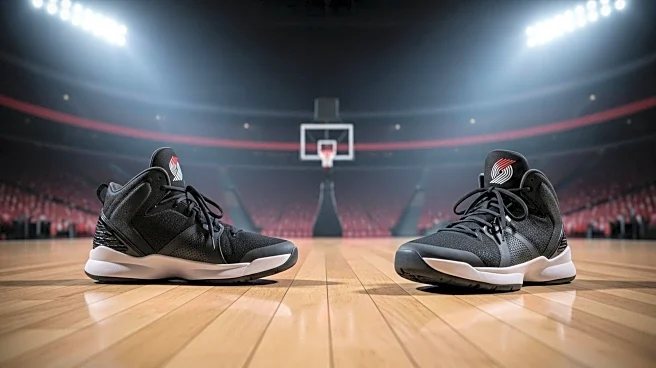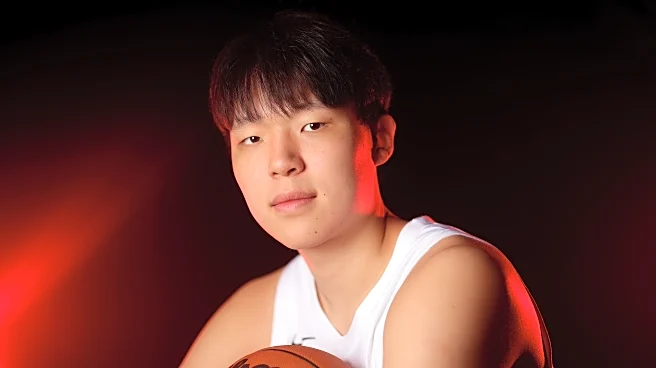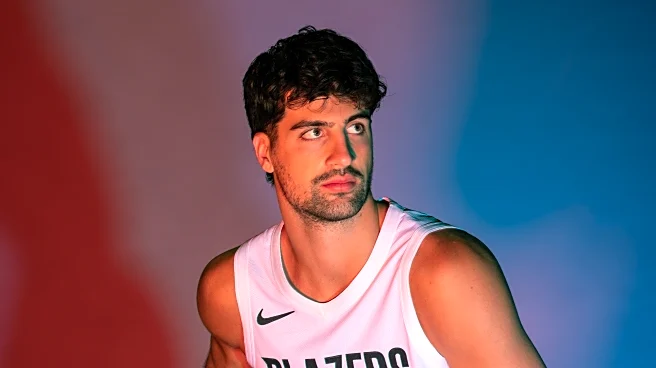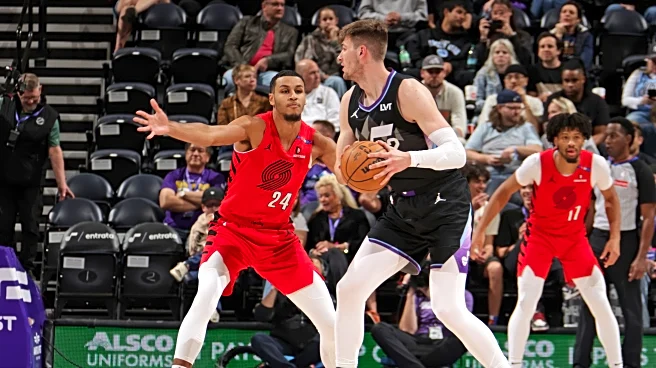What's Happening?
Portland Trail Blazers rookie Yang Hansen has made a humorous yet revealing self-assessment regarding his athleticism during the team's training camp. Hansen, alongside second-year player Donovan Clingan, forms the Blazers' young frontcourt. While both players are talented, their similar physical attributes raise questions about the team's ability to adapt to a faster-paced game strategy. Hansen is known for his offensive skills and passing, while Clingan has shown promise as a defensive player. However, neither player excels in fast-break situations, which could be a concern given the team's focus on increasing game pace. The Blazers have a rim-running player, Robert Williams III, but his frequent injuries limit his availability, leaving Hansen and Clingan to manage the frontcourt.
Why It's Important?
The Blazers' emphasis on a faster game pace is intended to enhance overall team performance, benefiting players like Scoot Henderson, Deni Avdija, and Shaedon Sharpe. However, the effectiveness of this strategy depends on the frontcourt's ability to keep up with the tempo. Hansen and Clingan's lack of athleticism in fast-break scenarios could hinder the team's transition to a more dynamic style of play. This situation highlights the importance of having versatile players who can adapt to different game strategies, especially in a league where speed and agility are increasingly valued.
What's Next?
The Blazers will need to assess their frontcourt's performance as the season progresses, potentially considering adjustments to their lineup or strategy to better align with their pace-focused approach. Monitoring Robert Williams III's recovery and availability will also be crucial, as his presence could provide the athleticism needed in the frontcourt. The team's management may explore trade options or player development to address these concerns and optimize their roster for the desired style of play.
Beyond the Headlines
The Blazers' situation underscores broader trends in the NBA, where teams are increasingly prioritizing speed and versatility. This shift may influence player recruitment and development strategies, as teams seek athletes who can thrive in fast-paced environments. Additionally, the Blazers' focus on pace could impact their fan engagement and marketability, as dynamic gameplay often attracts more viewers and enhances the team's brand.











